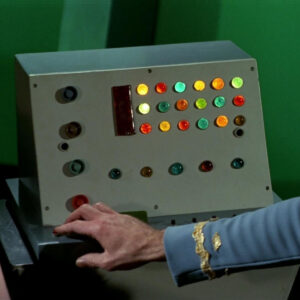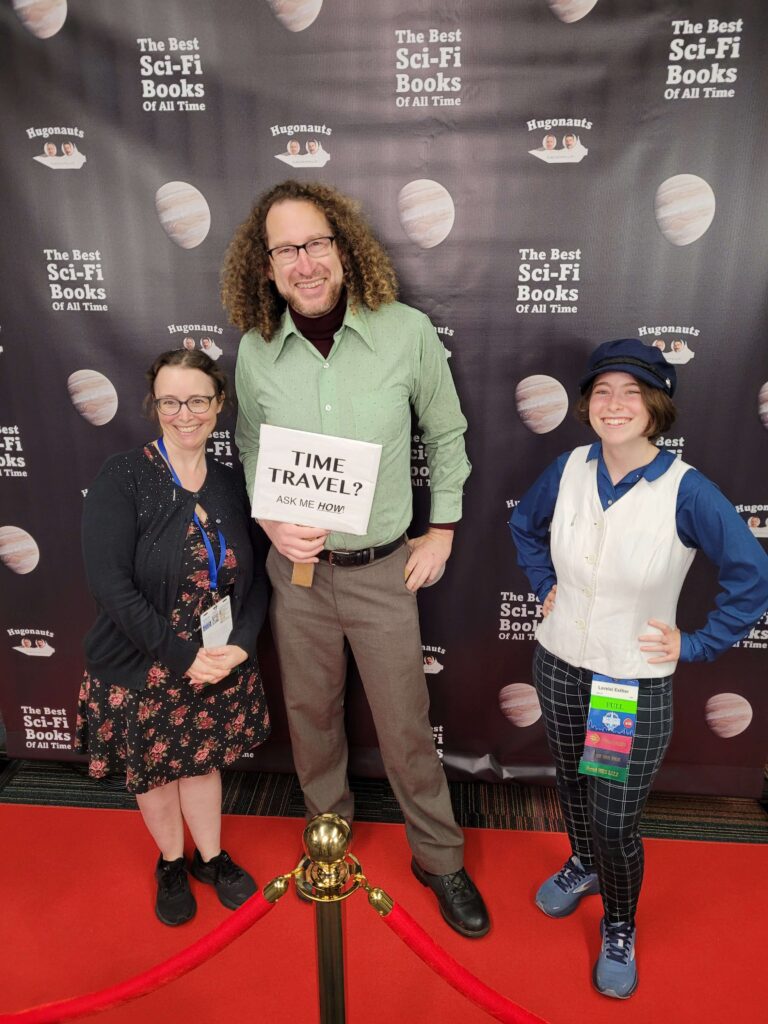 Recently I was reading a Facebook group about vintage mainframe systems and I nearly fell out of my chair when someone casually mentioned they run their 2022 business on 1967-era IBM mainframe.
Recently I was reading a Facebook group about vintage mainframe systems and I nearly fell out of my chair when someone casually mentioned they run their 2022 business on 1967-era IBM mainframe.
No way!
Yes way, actually. To be clear, it’s an emulated system (running actual 1960s hardware in 2022 would be stratospherically expensive, if it was even possible to source and maintain). Nonetheless, we’re talking about 24-bit computing from an era of punch cards, from a time before Windows, Unix, the Internet, or even floppy disks.
And yes, he’s using a Raspberry Pi.
We’ve talked about vintage mainframe systems as a hobbyist endeavor in the past, and I myself have an “$8 million-dollar mainframe” at home, running IBM MVS 3.8j on the Hercules emulator on a Linux VM. My experience with that community has been that many people are geeking out on old tech, playing with COBOL, hunting down IBM utilities, and generally hacking on these systems (in the positive sense of the word) for the joy of hacking.
But actually doing productive work in 2022 on such a system? Running your business on one!? And he’s using Gopher too?!? To be honest, when I saw Gopher I was a little hesitant because it seemed like a random technology to throw in, but as you’ll see, the reason it was chosen makes sense.
I had to get an interview. And to my delight, it turned into two interviews! Not only is Joshua using an emulated mainframe to manage his business, but he’s helping Serling-Award winning and Hugo-nominated web project Galactic Journey run one as well.
For those who don’t know, the Hugo Awards are the Oscars of science fiction. Getting nominated for one is a Big Deal.
Galactic Journey began in 2013 – or 1958 from their perspective. As they put it, “The Traveler and his team live in 1967, regularly commuting 55 years into the future to write about then-contemporary science fiction and fantasy, particularly fiction found in magazines. ” You’re getting a daily window back 55 years in time, living life through the eyes of “The Traveler” who reports form the perspective of that time. (Check out the media they’ve done. They also are fun to follow.) Naturally, if you’re living in 1967, you need a mainframe to really understand the time, hence their interest. That period is notable for the release of IBM’s OS/360 (1966), a landmark in operating system development.
Now read on for a fascinating read featuring:
- Joshua Lamb, proprietor of several ventures in Pennsylvania and vintage mainframe enthusiast
- Gideon Marcus, founder of Galactic Journey
Joshua, let’s start with you. You’re the proprietor of an antique electronic repair shop. What is it you repair exactly?
Joshua: Actually that is one of 3 small business ventures that I have. For my antique electronic repair shop, I work to restore mechanical and vacuum electron tube devices like radios, amplifiers and phonographs. For my other venture I am half owner in Caspers Cupboard. A craft show/vendor fair business that sells handmade incense and essential oils. ‘And my final one, I work as a part-time handyman doing home repairs for the elderly around my town.. All of my ventures unitize the virtual IBM System 370 running IBM OS-MVT one way or another.
 Gideon, what is the Galactic Journey project all about?
Gideon, what is the Galactic Journey project all about?
Gideon: Galactic Journey is nothing less than a time machine. It goes just one way—to exactly 55 years ago. Thus, as I write this, it is currently September 12, 1967. Yesterday was the 11th, tomorrow is the 13th. We started out just way back in October 1958 (2013) writing articles every other day covering science fiction magazines and the latest space shots. Over time, our coverage expanded to include virtually every English language word of science fiction printed (in books, magazines, even fanzines), but also contextual things like fashion, politics, music, art, and more.
Beyond that, our scope has grown. We now have a museum, a news service, a radio station, a lounge, and as of this year…an IBM/360!
The goal of the Journey is to shine a light on today by spotlighting yesterday. The resonance between the two eras is striking and instructive to even the casual student of history. We are fighting over the same things, enjoying the same pleasures, experiencing the same phenomena. Plus, there is lots of great literary art by undersung creators—we bring them back for folks to discover!
Before we get into tech, I’d like to ask your perspective on a couple modern trends. Joshua, seems like today everything is disposable instead of electronics of old. If you go back to the 1930s, radios were heirloom pieces. At one time, televisions, toasters, and the like were routinely repaired but today they’re tossed in the trash and a replacement is ordered from Amazon. Are most modern electronics repairable?
Joshua: It really does depend on the device! I routinely fix space heaters for people. 90% of the time the power switch is at fault for their failure. Once a circuit board is added to something it does become more complicated to repair but sometimes can be repaired depending on the design. Why did incandescent light bulbs advertise 10,000 hours back in the 1990s and now they only advertise 1,000 hours. Corporations have purposely designed planned obsolescence to force people to buy replacements instead of repairing older. ‘And a lot of times, they’ve purposely designed mechanisms to stop things from being repaired. Like permanently gluing cases together or using fasteners that purposely break upon opening the case.
And from the man from 1967, what’s your take on the modern digital trend, like Kindle, versus the paper trail and books of old?
Gideon: I really enjoy books—the smell, the feel, the ease with which one can flip to other pages for reference. And I think books, particularly nonfiction books, were better written back when they were the primary source of information. I don’t hate e-books, and I certainly value the Internet and what it can offer. But given the opportunity, I use my offline library over the computer.
What are your guys’ IT backgrounds?
Joshua: I worked in tech support and mainframe operations for IBM Corporation on the Eckerd Drug and Unisource accounts during a 20 year period of time.
Gideon: I couldn’t have gotten it off the ground without the hard work of Joshua, who I understand worked on IBM mainframes for much of his life.
I started in IT as a tech support flunkie in 1995, eventually becoming an IT Manager for a division of Revlon. I’m kind of an IT generalist, and I have had IT responsibilities as all of the companies I’ve been involved with over the last 20 years. Currently, I’m the system operator for Journeyvac, while Joshua is the systems engineer. The fellow who made MVT 21.8 gives us welcome advice every so often, so I guess he’s the systems analyst.
So Joshua, the reason for the interview: I saw in a Facebook group that you run your business on an emulated IBM mainframe. You’re running MVT 21.8 on the Hercules mainframe emulator. MVT was introduced in 1967 and I think 21.8 was 1972ish? To put this in perspective for our readers, we’re at the dawn of multiuser systems with 24-bit OSes here (max memory 16MB). Most people today would think you couldn’t run a watch on that, yet you’ve got your business running on it. Of course, in their day, the world’s biggest enterprises ran on these systems. Anyway, please tell us all about your setup!
Joshua: Well currently I have two Raspberry PI B (1st generation) servers doing the job. I have recently obtained an IBM System 3200x from a garage sale for $50 and will eventually move to that system. The 3200x is an X86 business server and far more powerful than a Raspberry PI. ‘But as for the PIs… they are 700mHz ARM processors each with 512meg of ram. First PI is used as the web server and second PI is used as the mainframe host. The web server uses HTML and PHP for the website. When a customer has web interaction, such as placing an order or sending us a message from the website, the SUBMIT on the HTML form kicks off a PHP program that takes the entered data and formats it into a JCL job. Then PHP submits the job to the mainframe via the NetCat utility in Debian to the Hercules virtual card reader – socket device. The mainframe runs the job and updates all the necessary data sets.
You’re using MVT 21.8, but there are later free mainframe OSes available. Why MVT?
Joshua: Simple answer is simplicity! I wanted a system that I can store data and manipulate it when needed. MVS 3.8j is also available for download but it’s far more detailed than what I needed. My mainframe has two users so I don’t need RACF security, or an ISPF utility [a combination file-browser/editor/IDE text-UI application –raindog308]. I don’t need any fancy broadcast messages welcoming me when I sign in with a cute text graphic. MVS 3.8j comes with JES2 [JES is a batch management system –raindog308], which is what I used at IBM for years, and after using MVT 21.8f with ASP 3.2 (JES3) for job entry and queue management… I ended up liking it a lot more. Kevin Leonard put together an MVT 21.8f TurnKey that is very complete. Way easier then running system generation from scratch. He documented it well too which was wonderful when learning ASP.
Gideon, why did you choose MVT 21.8?
Gideon: This was a deliberate choice. As you note, MVT came out in 1967, the year the Journey currently is in. In fact, the inspiration came when I watched a short NASA film on Gemini, which talked about how NASA had just upgraded from the IBM 7094 to the IBM /360. This prompted me to cast about to see if a good emulator had been developed. Thus, I found Hercules. Through a Facebook mainframe group, I found Joshua.
So on the mainframe, you’re storing customer, order, and sales data. How is that organized? VSAM? Gideon, what are you doing with your installation?
Joshua: VSAM doesn’t exist in OS/360-MVT. Catalogs were originally provided in OS/360 in the form of CVOLs. All my data is organized in sequential and partition data sets by fixed column width and sometimes free form text storage. Picture this if you will, a spreadsheet that is only text, with columns starting at specific column numbers thus making up the data set. That’s how I store my data.
Gideon: The installation is brand new, so we’re not storing anything there yet. Ultimately, I’d like users to use it for writing and running programs. Joshua has developed a primitive email system, too, so folks can chat with each other.
Joshua, I’m guessing you wrote the business code (creating invoices, marking them paid, updating inventory, etc.) yourself. What languages are you using on the mainframe side?
Joshua: This actually was the hardest part! For the most part I am using RPG which is no easy task to learn. ‘And, I’m by no means a master at it. I tried my hand at COBOL too but it ended up being too wordy for my simple tasks. RPG made the most sense and I pulled my hair out numerous times while figuring it out. The SORT program in MVT is also my friend. Between the two, I actually have the system doing what I want. There is no system scheduler in my version of MVT so I use CRON to submit the JCL job stream to the virtual card reader via the Linux NetCat utility.
I also saw you’re all using the venerable Gopher protocol! What is its role in your world?
Joshua: I was late to the Gopher world. I remember Gopher from years ago but never used it. So, when I needed to be able to share some mainframe virtual printer output, Gopher came to mind as a solution. I originally did simple HTML but switched to Gopher just to be different. Thanks to Linux open source pygopherd server I’m glad I did, it’s works great for my purpose especially since so much mainframe output is dependent on fixed width fonts like Courier. HTML, unless specified, loves variable fonts like Ariel by default. Gopher is fixed width right from start.
You mentioned some other technologies (Debian, PHP, OpenVPN) so obviously you’re not some crusty old-timer who refuses to get out of the 70s. Sounds like your business setup is a labor of love.
Joshua: OpenVPN is used I can access the webserver and mainframe from anywhere, but I still prefer some element of privacy especially when using my cell phone for remote access. Mainly I just didn’t want my mainframe and server login prompts being public for the world to find.

Check out The Journey Show – it’s fun!
And Gideon, since you’re living in 1967, setup is a labor of love?
Gideon: Or insanity. Sometimes I wonder.
Seriously, we’re doing it because it is a piece of computing history virtually inaccessible to anyone under 45. Punch cards, line printers, IPL, DASDs—that whole way of interacting with computers. I was born in ’74, and my first experience was with the Atari 8 Bit. Primitive by today’s standards, but incredibly user friendly comparatively. My only brush with the mainframe world was a VAX FORTRAN class I took in ’93, and working with an IBM AS400 in the late 90s.
It used to be possible to access a CDC 6500 at Seattle’s Computer History Museum, but it’s closed now and all the engineers and technicians laid off. It’s heartbreaking. I wanted to recreate a piece of the old world before there was no one left who could pull it off.
Anything else you’d like to share about your vintage mainframe world?
Joshua: I’m 43 years old, I have an appreciation and love for the mainframe environment. I have seen the benefits of using a mainframe in my past career opportunities. Nothing I’ve ever seen is more effective at processing large amounts of data than using a mainframe. My goal was for a simple system, doing simple tasks, with a basic purpose… and I found that using Hercules and MVT 21.8f. I know very well I could do everything in Linux and use BASH script, or PHP, to do the exact same thing… but what fun would that be! ;-)
Gideon: I’m learning a lot! There’s nothing like hands-on experience to teach you about the past. I hope others will request logons so they can play with Journeyvac when it goes live this November!
JourneyVac has entered Stage 2: it is operational and taking applications for LOGONs.
Do you want to play with a real mainframe, 1967-style? This is your chance! pic.twitter.com/JEavwb7sgj
— Galactic Journey News (@journeygalactic) September 22, 2022























Leave a Reply